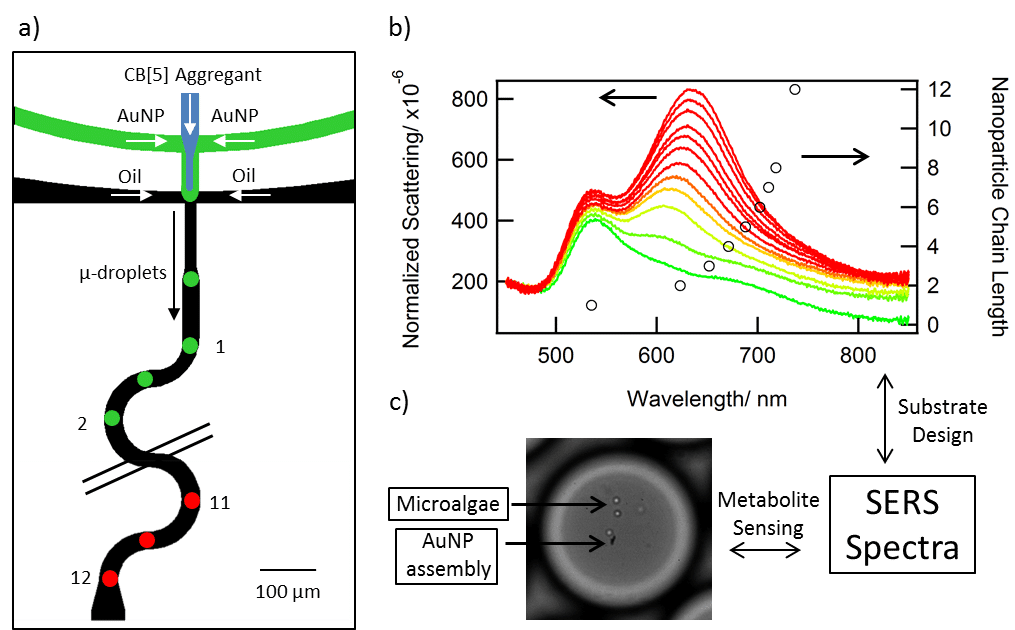
Real-time Monitoring of Plasmonics and SERS in Microfluidic Droplets: Towards the Artificial Selection of Microalgae for Biofuel Production
Microfluidic microdroplets are increasingly used for SERS-based sensing because the two techniques are complimentary: microfluidics provides the precise fluidic control necessary for reliable SERS, while SERS provides sensing in an environment where it is otherwise difficult to integrate probes.[1, 2] However, so far the plasmonics of microfluidic SERS systems have not been analysed or correlated to the SERS. This severely hinders rational design of the SERS substrate.
We study the assembly of nanoparticles in microfluidics droplets by scattering microspectroscopy. By this method we track the assembly process on the millisecond timescale and relate the SERS response to changes in the plasmonic properties of the nanoparticle assemblies.[3] Using this information, we work towards sensing the metabolites of microalgae cultured in microdroplets. By adapting well established, high throughput, microdroplet sorting methods, this could be used for the artificial selection of beneficial phenotypes from algal colonies.

(a) A schematic of a typical microfluidic device used in this work (b) Scattering spectra taken at sequential points along the channel as the nanoparticles assemble (c) A microdroplet containing microalgae and a nanoparticle assembly.
[1] A. Marz, T. Henkel, D. Cialla, M. Schmitt and J. Popp, Droplet formation via flow-through microdevices in Raman and surface enhanced Raman spectroscopy—concepts and applications, Lab Chip 11, 2011 (3584)
[2] J. Kim, Joining plasmonics with microfluidics: from convenience to inevitability, Lab Chip 19, 2012 (3611)
[3] A. R. Salmon, R. Esteban, R. W. Taylor, J. T. Hugall, C. Tserkezis, C. A. Smith, G. Whyte, O. A. Scherman, J. Aizpurua, C. Abell, J. J. Baumberg, Real time nanoparticle assembly monitored by optical spectroscopy and SERS in refractive index matched microdroplets, ACS Nano (in submission)
ars50@cam.ac.uk
Powered by Eventact EMS